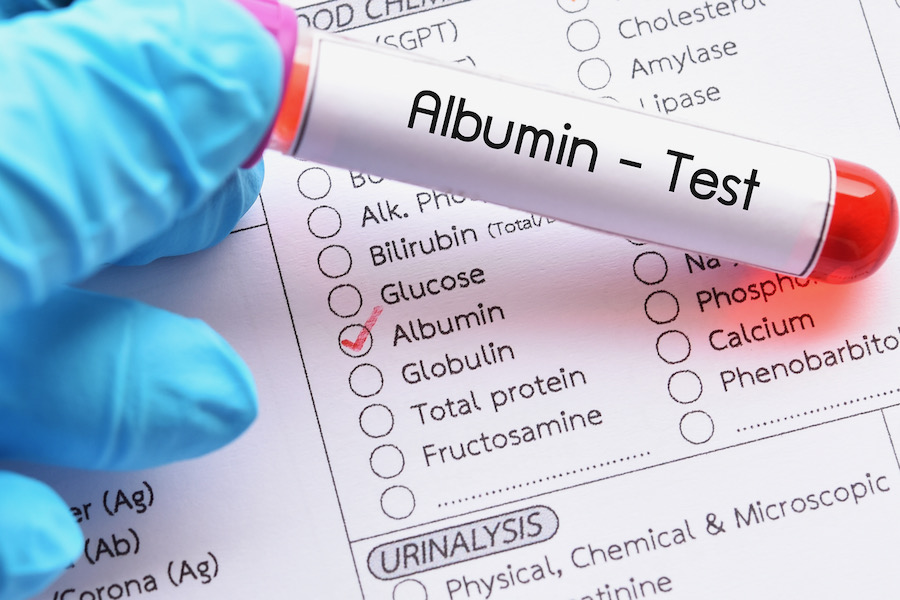Dietitian Blog, MNT Guidelines | Mar 23 2021
It’s official: Albumin and prealbumin are out

There are some trends that just won’t fade (looking at you, mom jeans). At the top of the trend list in the clinical nutrition world is using albumin and prealbumin as markers of nutrition status. This seems to be one of the most cherished, yet baseless, practices that clinical dietitians contend with on a regular basis. But the experts at ASPEN have spoken, and these visceral proteins are out of style.
Back in the day, albumin was king
Back in the 1970s, albumin was pretty groovy. It was even considered to be an “instant nutrition assessment” to identify patients at risk for malnutrition, who were in need of aggressive nutrition therapy. Moving into the 1990s, researchers thought prealbumin (aka transthyretin) was totally rad because it had a much shorter half-life than albumin and was believed to be the preferred laboratory measurement to assess nutrition status.
Albumin, meet inflammation
Like many visceral proteins, albumin and prealbumin are produced by the liver. As researchers have studied these proteins in greater depth, they have noticed some interesting trends. During times of acute inflammation, plasma concentrations of albumin and prealbumin are noticeably reduced, while production of proteins like C-reactive protein are increased. This led researchers to deem albumin and prealbumin negative acute phase reactants. So, during times of acute inflammation, the liver reprioritizes protein production, and albumin and prealbumin are downregulated.
In addition to this process, researchers have hypothesized a number of other interactions and processes that may contribute to low levels of albumin and prealbumin during inflammatory periods. One theory describes albumin simply relocating from the intravascular space (the space from which labs are drawn) to the interstitial space to fulfill its role as an antioxidant. Another theory suggests a shortened albumin half-life during times of rapid tissue catabolism. And still another theory points to increased GI and renal losses. Whatever the reason, when inflammation goes high, albumin and prealbumin go low. And for that reason, albumin and prealbumin are now thought to be markers of inflammation, rather than nutrition status.
Albumin is out. Now what?
As dietitians, we know that assessing nutrition status is way more than just a lab result. There are dozens of malnutrition screening tools, many validated for different patient populations. There’s the nutrition-focused physical exam. And we know that diagnosing malnutrition has literally nothing to do with visceral proteins. So, if you are still tallying your “low albumin” consultations like days of a jail sentence, download ASPEN’s official position paper declaring the end of the albumin era. Share that paper with anyone who needs to hear it because albumin is so yesterday.
Dietitians On Demand is the nationwide leader in staffing registered dietitians, specializing in short-term, temporary and permanent-hire positions in acute care, long term care and food service positions. Our dietitians cover a vacancy, maternity leave, vacations, FMLA or increases in census. Check out our job openings, or request your coverage today!
Reference
Evans DC, Corkins MR, Malone A, et al. The Use of Visceral Proteins as Nutrition Markers: An ASPEN Position Paper. Nutrition in Clinical Practice. Epub ahead of print. https://doi.org/10.1002/ncp.10588
Who we are
Dietitians On Demand is the nationwide leader in providing dietitians with jobs they love. If flexibility, competitive pay, a full benefits package, free CPEUs each month and a team dedicated to dietitians sound good to you, apply to our positions today.





